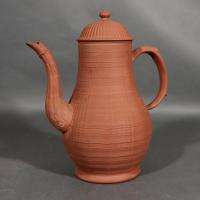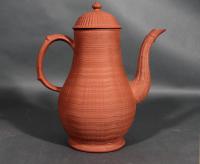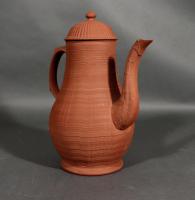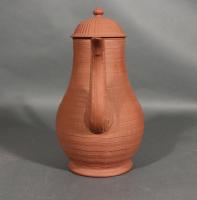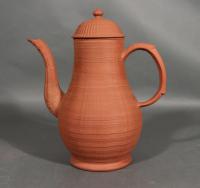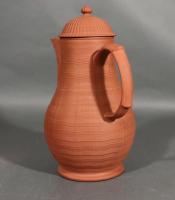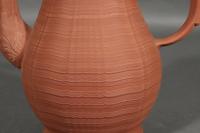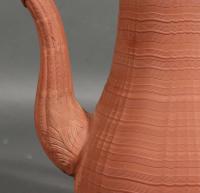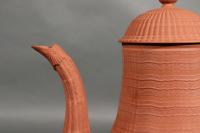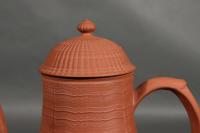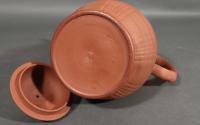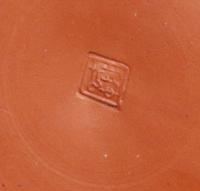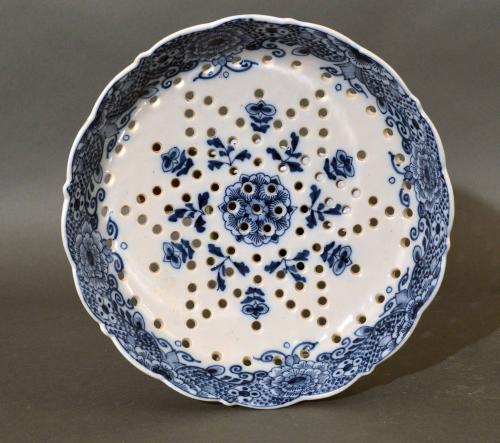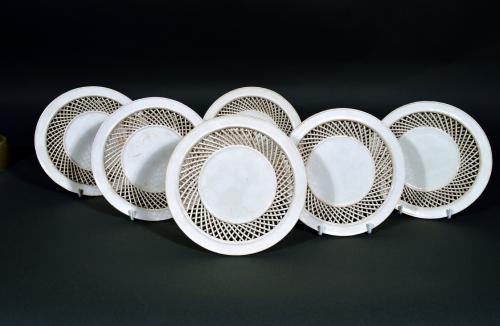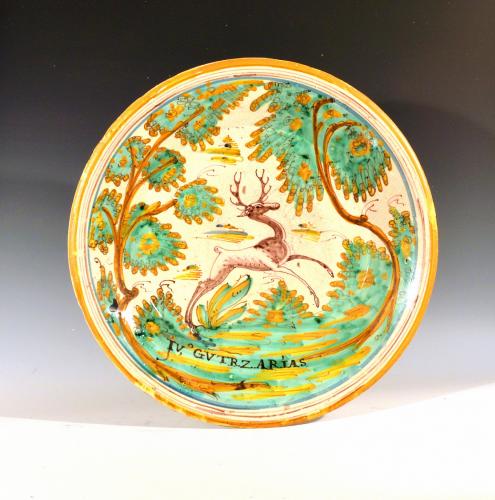
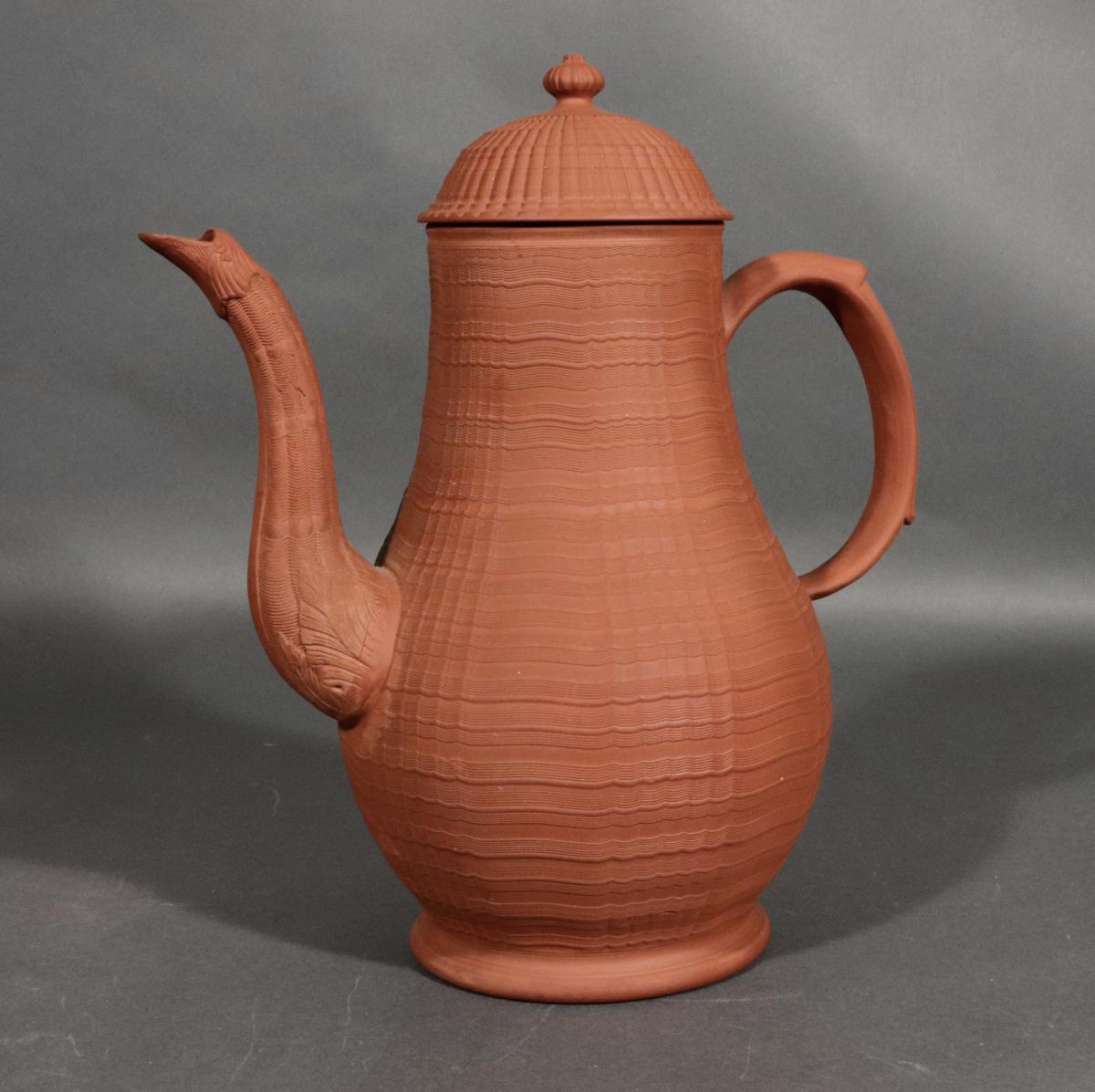
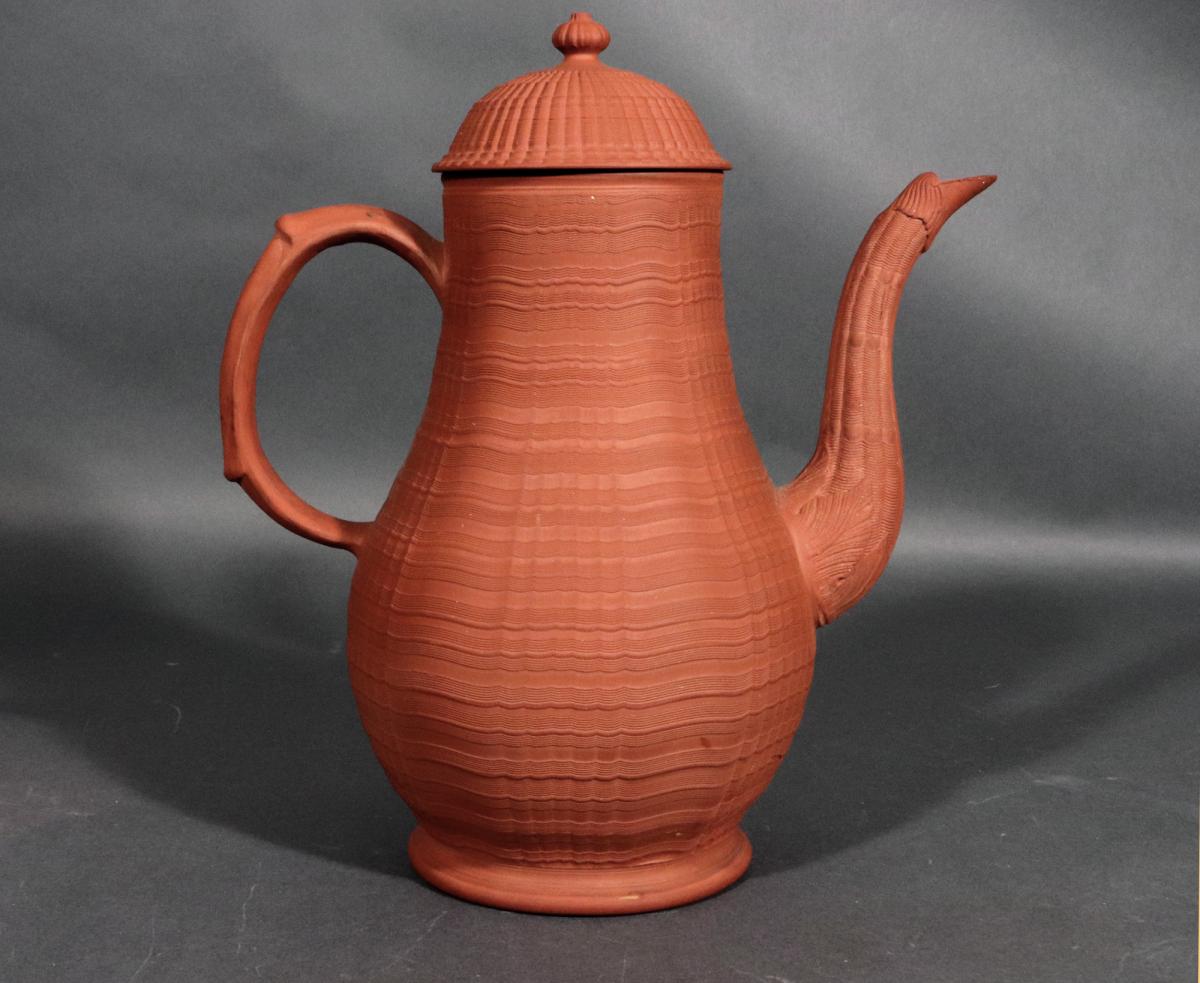
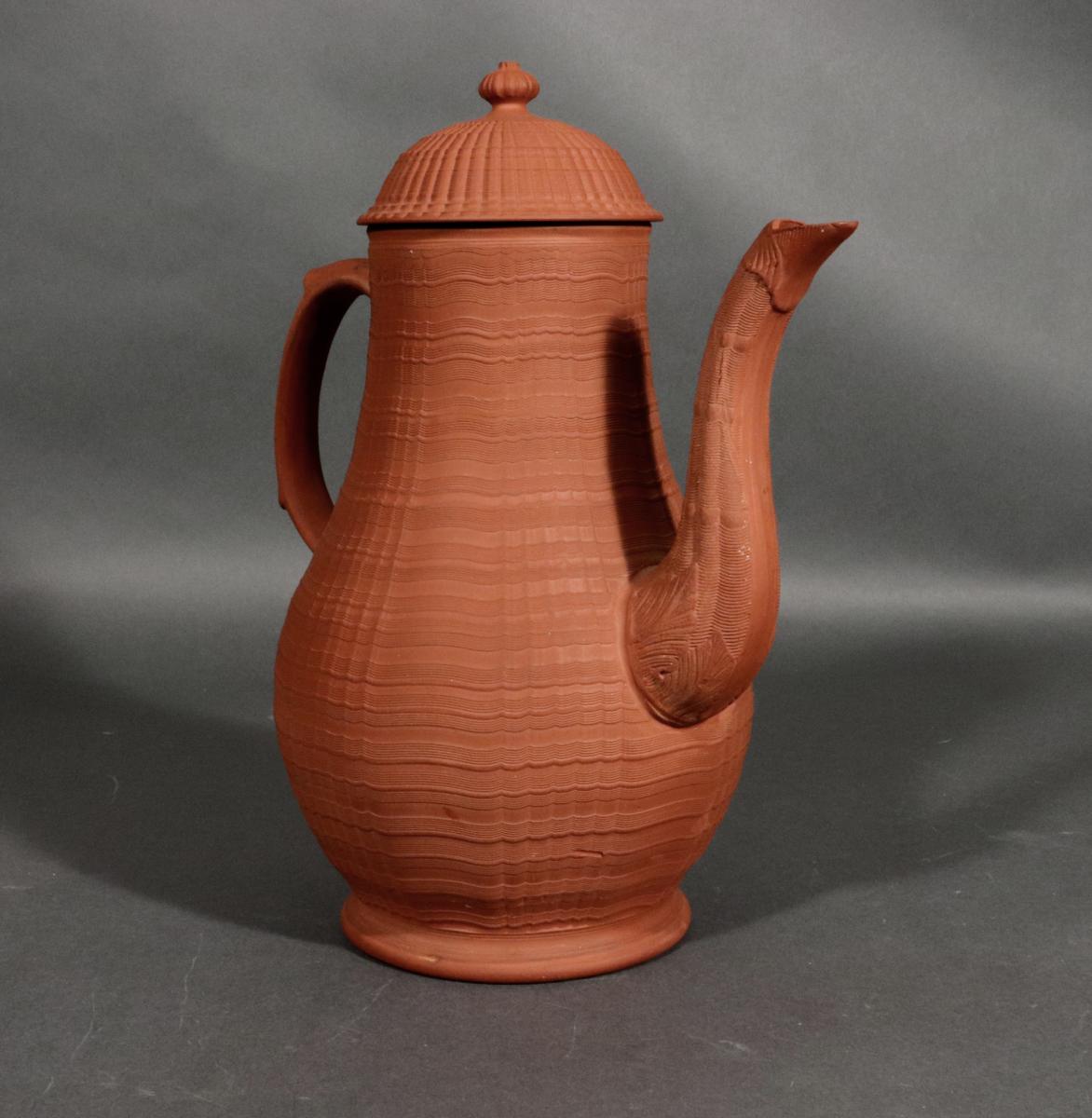
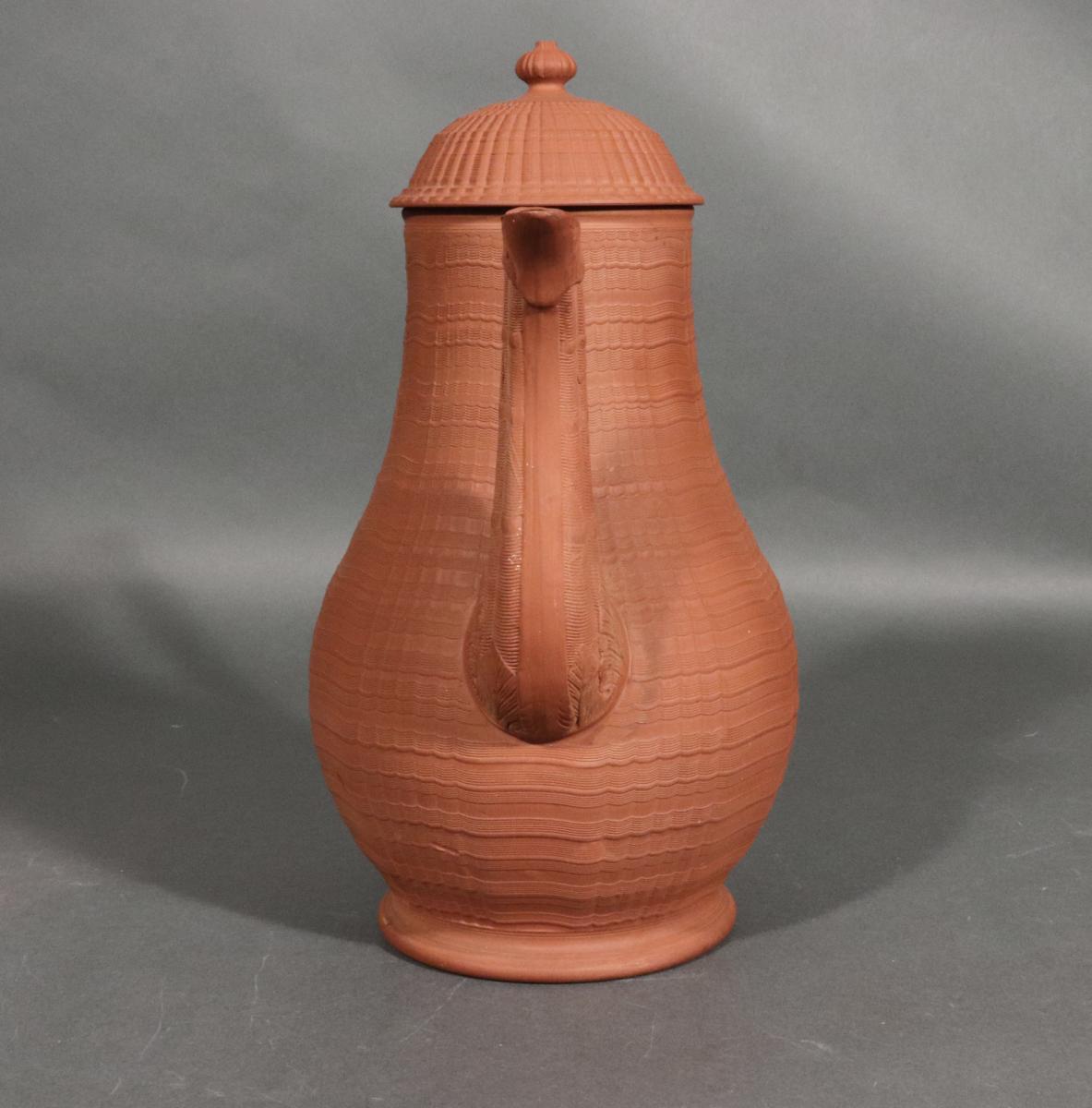
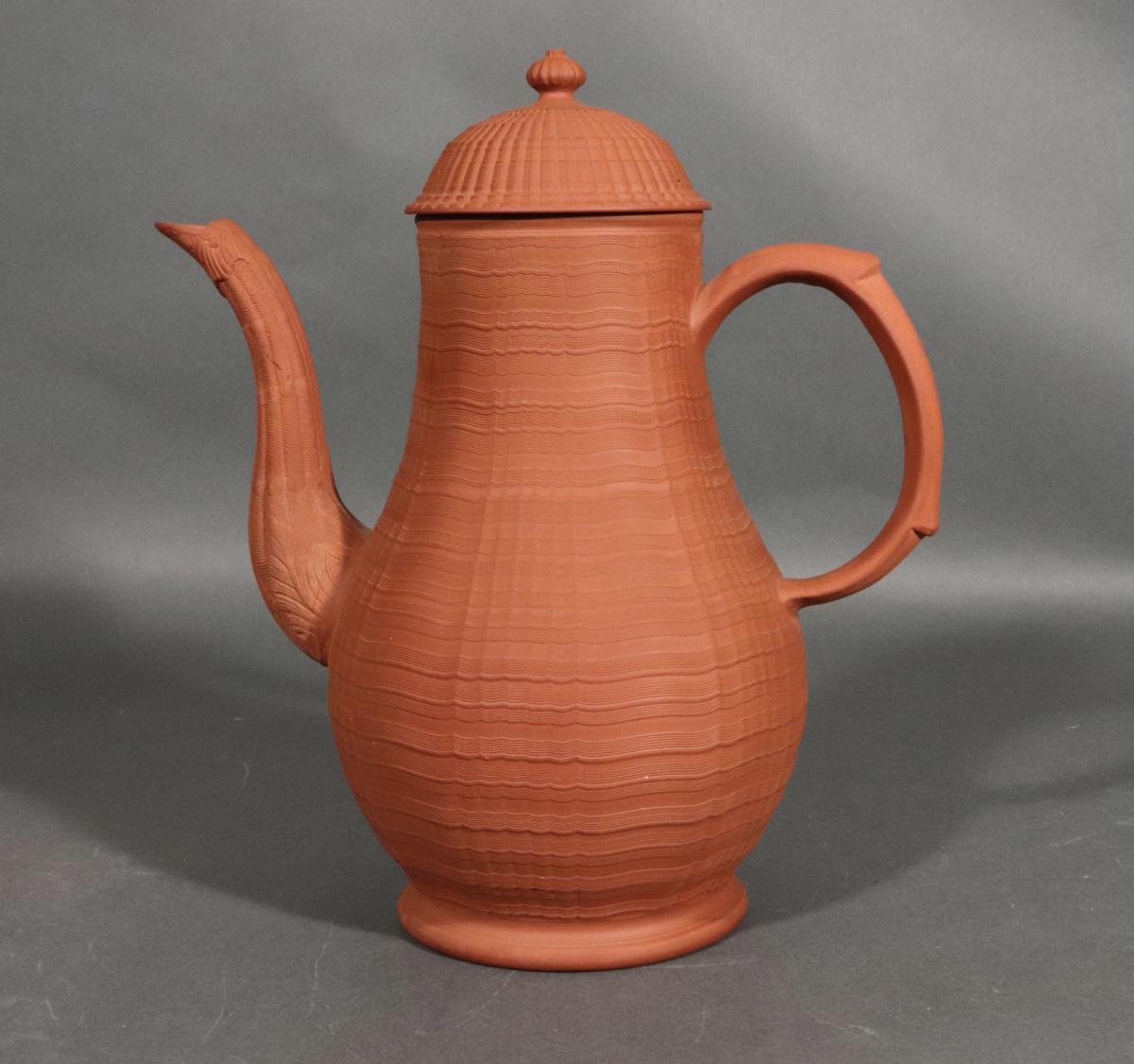
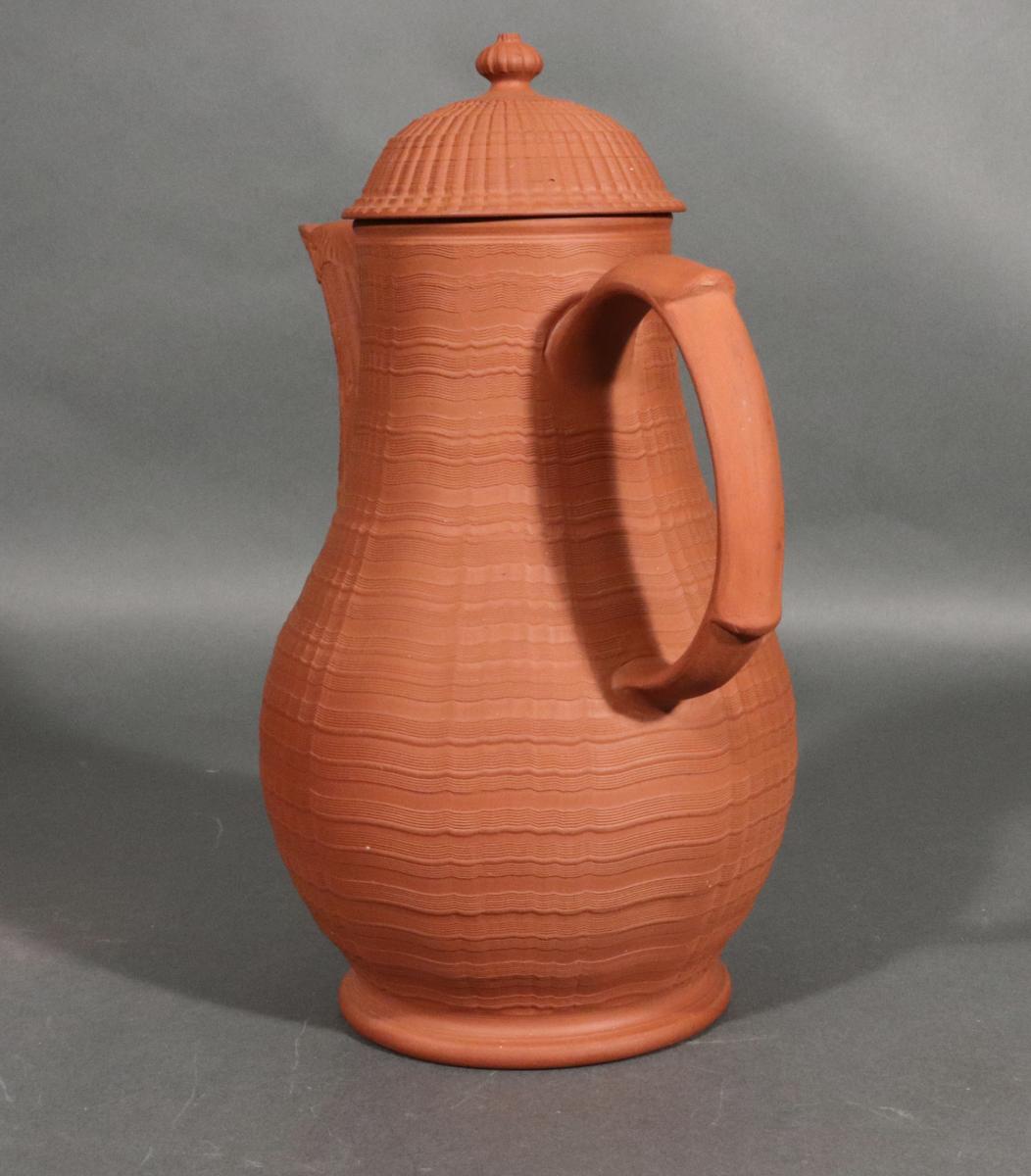
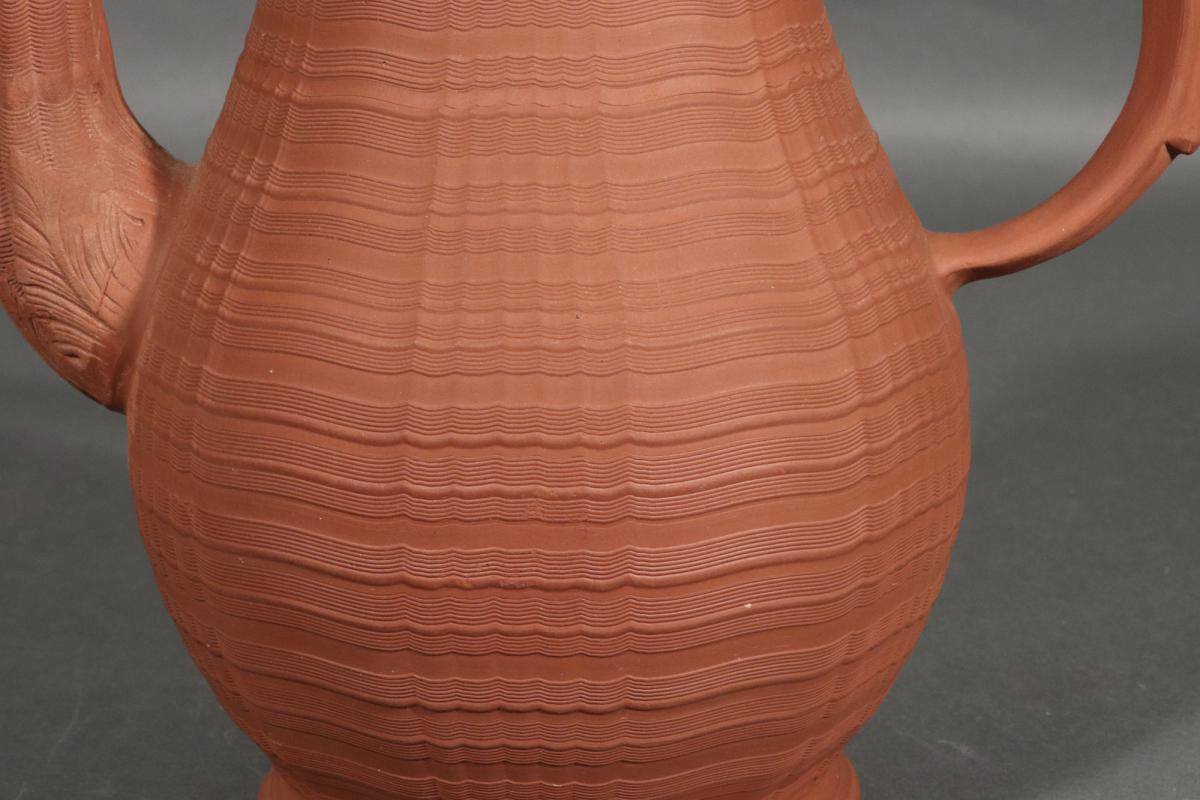
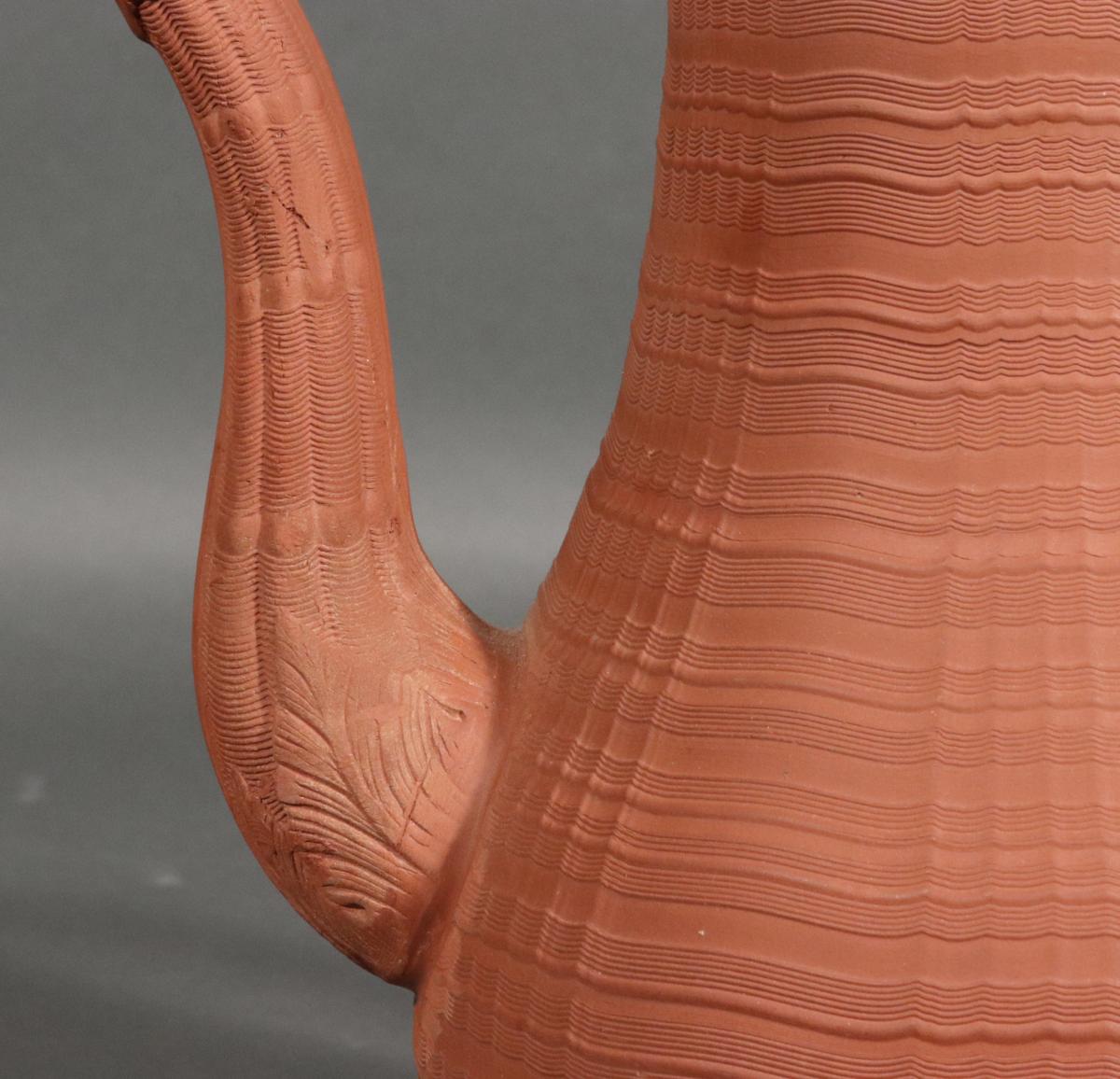
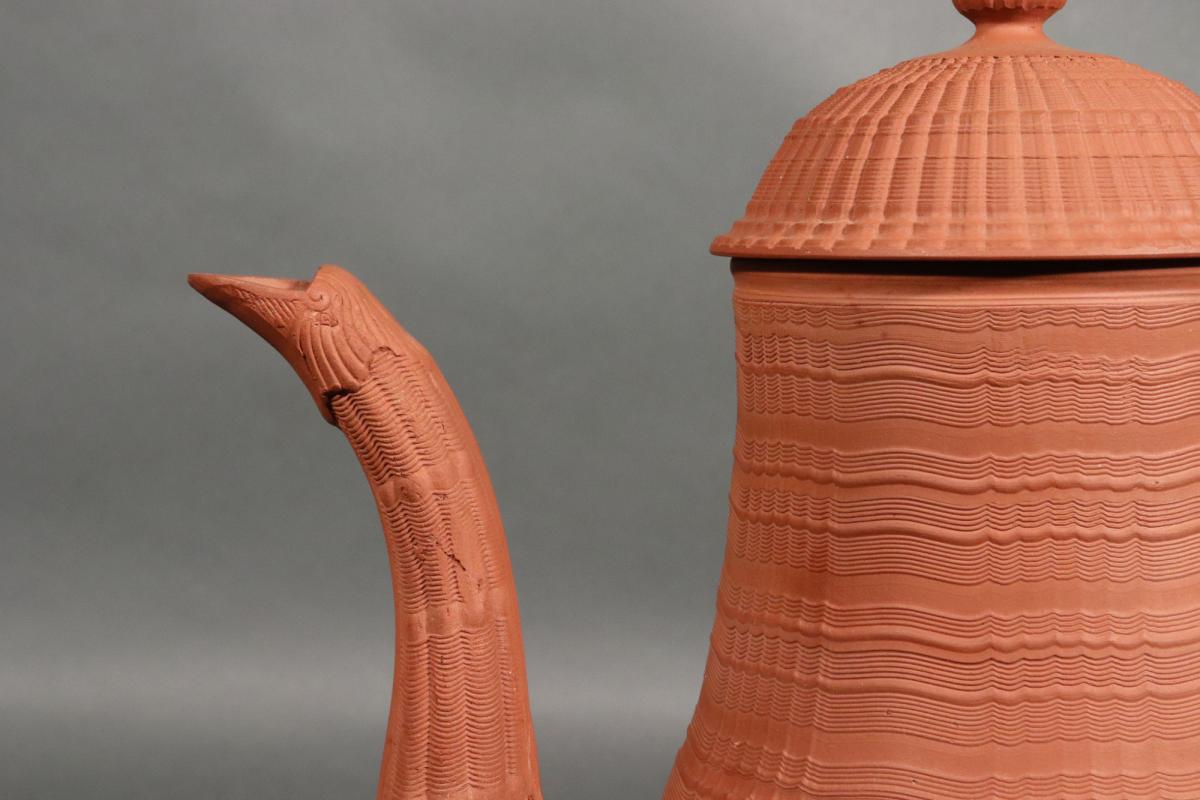
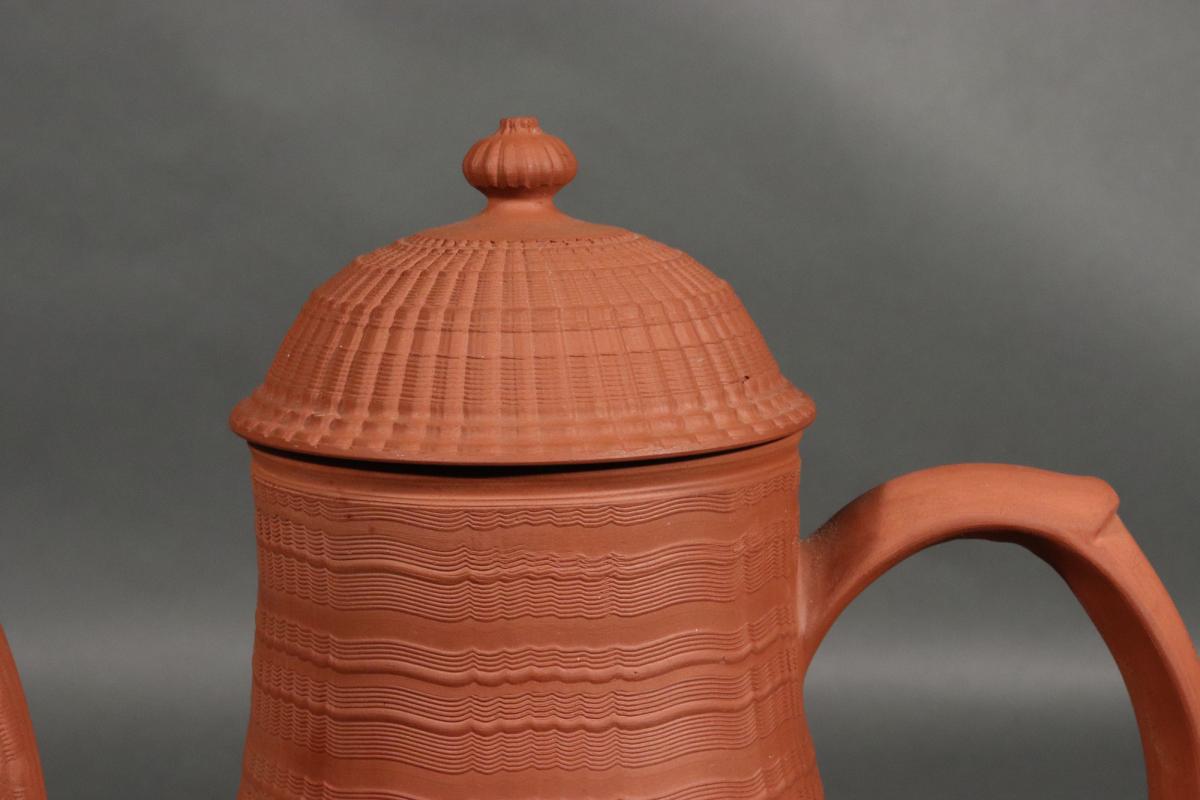
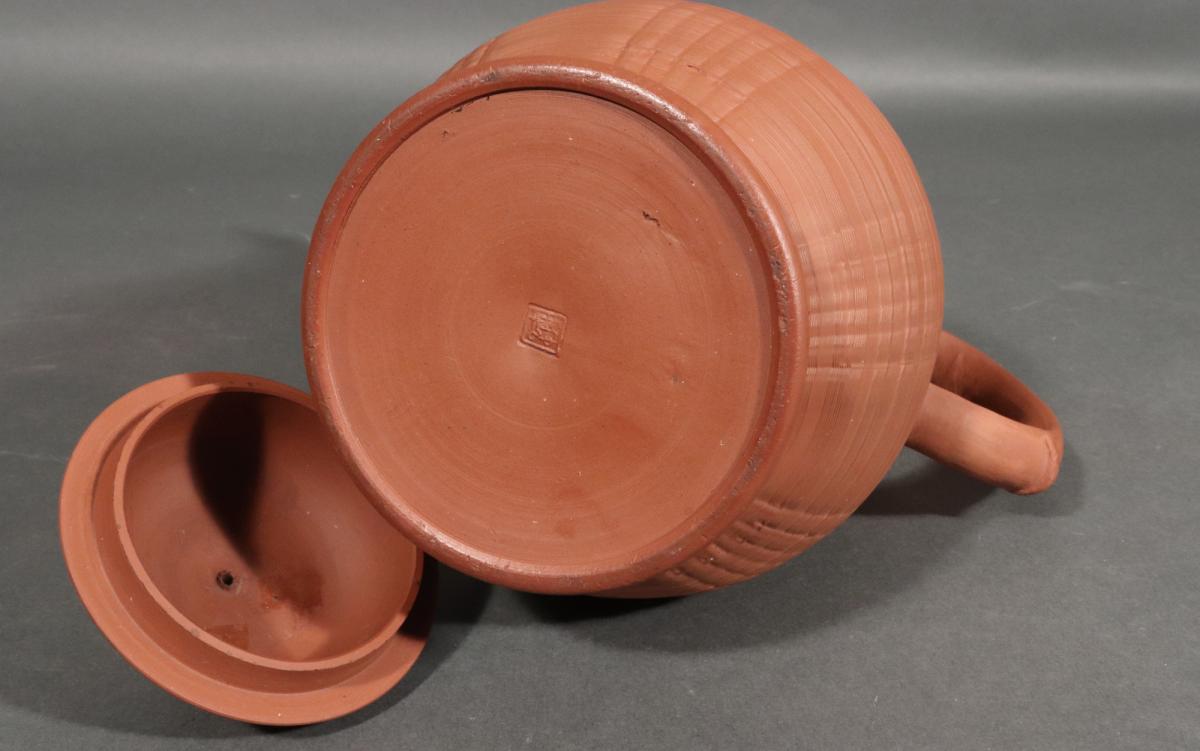
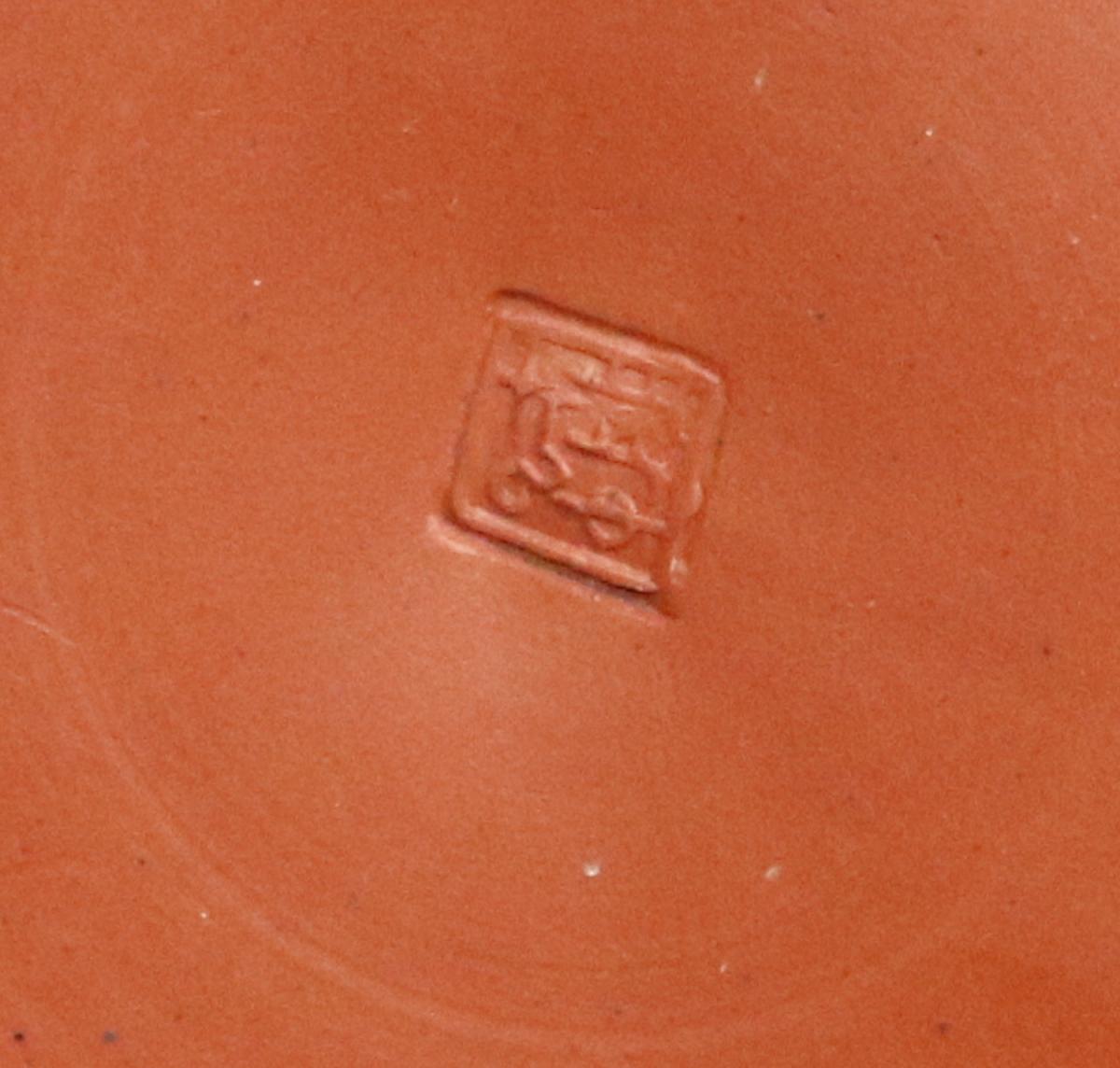
Price
£2150.00This object is eligible for a Certificate of BADA Provenance
The BADA Standard
- Since 1918, BADA has been the leading association for the antiques and fine art trade
- Members are elected for their knowledge, integrity and quality of stock
- Our clients are protected by BADA’s code of conduct
- Our dealers’ membership is reviewed and renewed annually
- Bada.org is a non-profit site: clients deal directly with members and they pay no hidden fees
English Stoneware Pottery Redware Coffeepot.
Staffordshire.
Circa 1765.
A Staffordshire redware stoneware coffeepot and cover with an engine-turned body and cover. The cover with an acorn finial. The mouth of the spout in the form of a bird's mouth and to the base of the spout are leaves to either side.
Mark: Impressed pseudo-Chinese chop mark.
Dimensions: 9 3/4 inches high x 8 1/2 inches x 5 inches deep.
Reference:
See a glazed redware example at the Chipstone Foundation where the inspiration for the shape is discussed (https://tinyurl.com/4aa8h9xa)-
The Early Renaissance Florentine architect Giuliano da Sangallo (c.1443-1516) is generally credited with the earliest consistent use of balusters in Europe. His designs influenced others, including Michelangelo (1475-1564), who modified the earlier baluster design to create the familiar vasiform shape that is narrow on top and swells at the bottom. The form became a ubiquitous motif in the eighteenth century, appearing in architecture, silver holloware, and turned furniture elements.[1] It also informed the design of many eighteenth-century ceramic vessels, including coffeepots. The design had practical advantages. Besides increasing the vessel’s capacity, the baluster shape also provided physical stability to the vessel—an important consideration when serving a hot beverage.
After about 1760, red earthenware copies of baluster-shaped silver coffeepots proliferated. With the increased use of engine-turning lathes in the pottery industry by the late 1760s, it became possible to add incised surface patterns in nearly unlimited variations, thereby broadening the market for fine red earthenware vessels. The body of this coffeepot was turned on a wheel, allowed to dry, then placed on the oscillating headstock of an engine-turning lathe. The repeat motion of a multi-bladed tool cut bands of wavy and zigzag parallel lines into the body. These geometric patterns were an explicit break from the decorative vocabulary of Chinoiserie that had dominated English pottery since Chinese porcelains were first imported in the seventeenth century and with the Rococo style. The comparative restraint of this decoration signals the beginnings of a more widespread interest in linear ornament, which was to become a hallmark of the emerging Neoclassical style.
(Ref: NY10356-nrrr)
Dimensions
24.77cm high x 21.59cm x 12.7cmCondition report
GoodStock number
NY10356-nrrrThe BADA Standard
- Since 1918, BADA has been the leading association for the antiques and fine art trade
- Members are elected for their knowledge, integrity and quality of stock
- Our clients are protected by BADA’s code of conduct
- Our dealers’ membership is reviewed and renewed annually
- Bada.org is a non-profit site: clients deal directly with members and they pay no hidden fees


